We made it to the ice!! Which is great timing because the swells in the water were pretty rough near the end- I almost fell out of my bunk a few times over the course of an evening. Large swells also make it hard to work (or even stand up straight). We first started getting into the ice floes around the afternoon of Tuesday, 4/1/08. By 4/2 we were getting into the thicker ice, and the weather changed significantly. Prior to the ice, it was foggy and rainy, with warm (though strong) winds. Then the northern winds started up and it got COLD. The wind was strong and cold enough to knock the breath right out of you. We also got some snow that hung around on deck- someone decided to build a mini snowman out on the fantail (the back end of the ship where the A-frame is) next to the multicorer, complete with a little red cap.
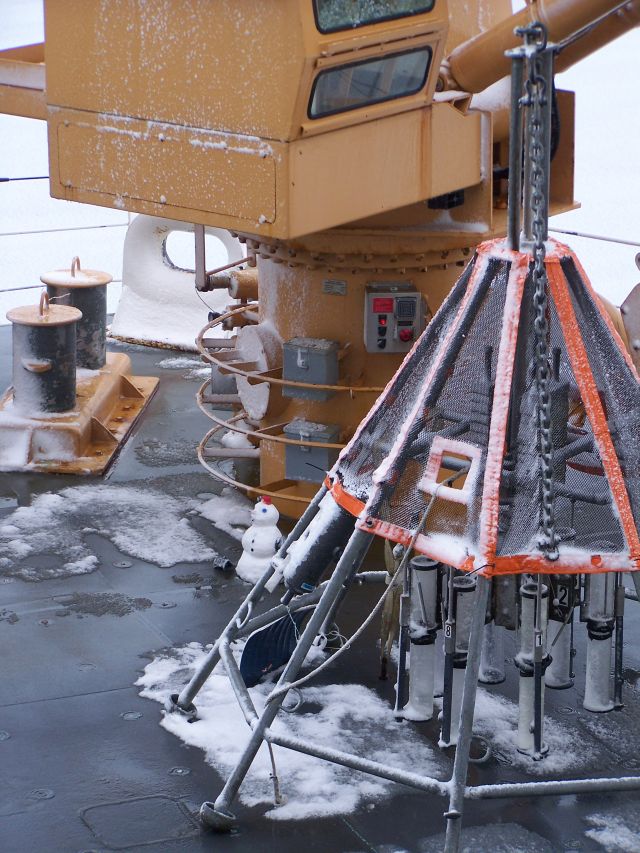
Once we got into the ice, a few scientists set up watch for "good ice" which means ice thick enough to walk on and take samples. Their research is pretty dependent upon having ice samples, so it was important for us to find suitable ice quickly. Today we found this kind of ice, and we quickly gathered up our gear to head out onto the ice for the first time on our cruise. This involves putting on our MD-900 survival suits and bunny boots, which keep us toasty warm while on the ice...and also gets you nice and sweaty trying to put them on! All the heavy gear gets put on sleds for easy transport once on the ice...too bad there aren't any good sledding hills on the ice!!
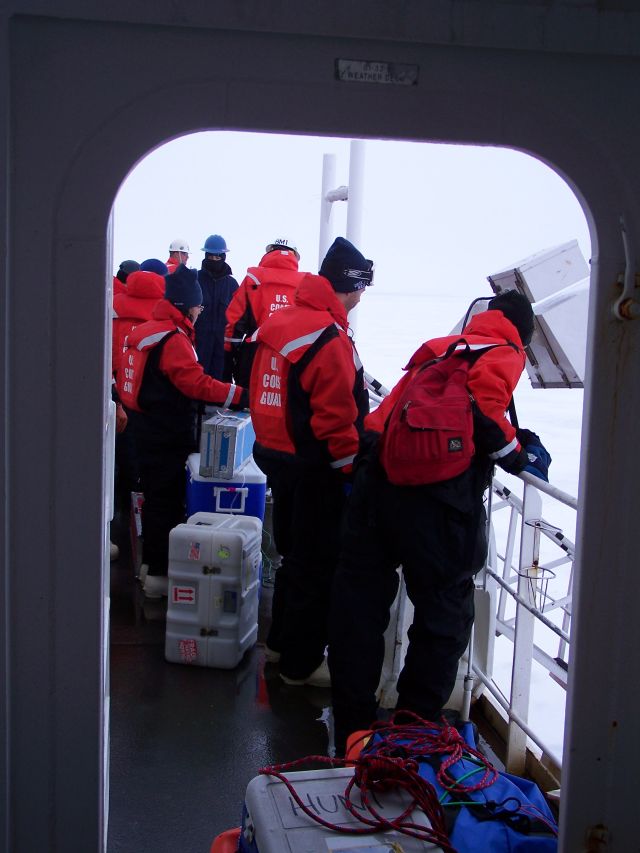
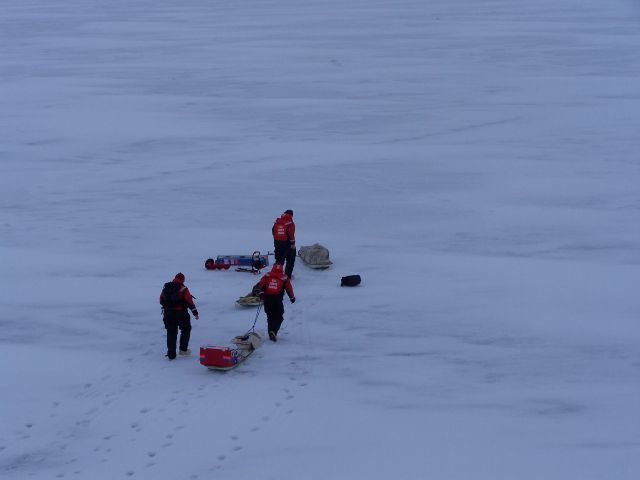
Now you may wonder what my role in the ice sampling is. Well, my research advisor David Shull had the idea to take an ROV (Remote Operated Vehicle, which looks similar to a teeny tiny submarine) out onto the ice, attach an oxygen probe to it and a light meter, and analyze how much oxygen and light are available directly below the ice. This gives us a way to measure these parameters without having to cut a hole through the ice (except of course the hole we put the ROV through). In doing so, we can measure what the actual oxygen and light conditions are in many areas of the ice, basically anywhere the ROV cable can reach. Oxygen and light conditions are important to measure, because the oxygen is produced by the ice algae that live on the underside of the ice which is used by other organisms in the water, and the ice algae need sunlight in order to grow and produce that oxygen. The ROV has a video camera attached to it as well, so we can take video (and make a DVD of it too!) while we're flying under the ice. It's a pretty neat setup.
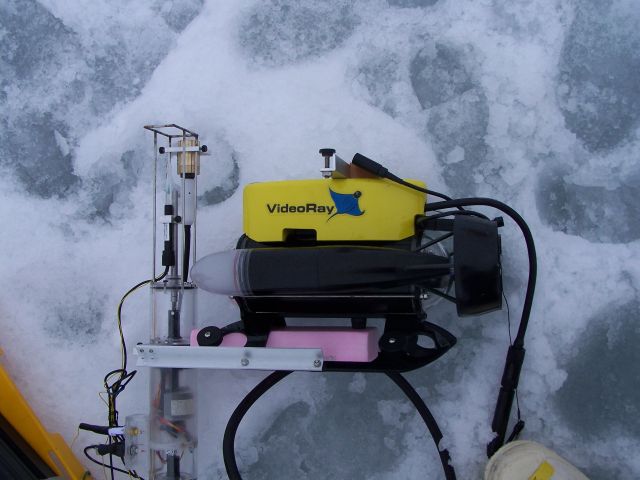

So, off we went to the ice to try out our setup, which had only been tested in a swimming pool prior to our cruise. We unloaded our mass of equipment at our site on the ice and then proceeded to drill several holes in the ice in order to make one large hole big enough for the ROV to fit though. We assembled the ROV, and lowered it down through the ice...

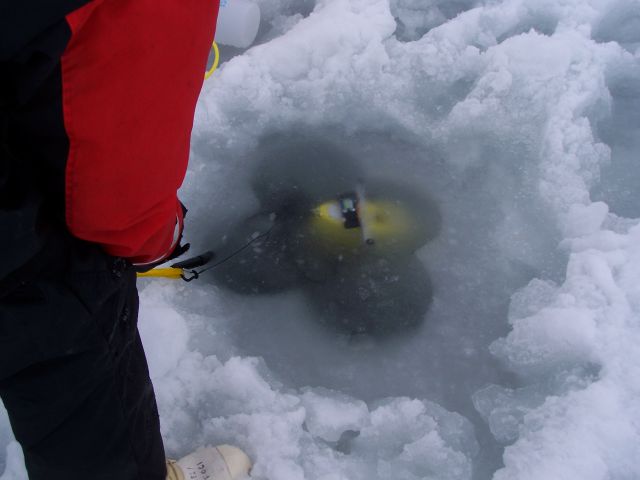
...but the weight that we'd put on the ROV to counterbalance it was too much, and it started sinking. So, we pulled it back up to remove some of the weight that we'd put on. On the way back up however, the cage that protects the oxygen meter and holds the light meter on fell off, and the oxygen probe hit the ice and broke! This was bad news, because each of those probes is expensive and we only brought three with us on this cruise (and we use them for other things besides attaching them to the ROV). Well, we couldn't let the trip to the ice be completely wasted, however. We removed all the equipment attached used for probing and flew the ROV under the ice just to see what was under there. It was pretty neat to see what the ice algae looks like. It's not spread out under the ice everywhere, its clumped into large patches. And there are krill right under the ice feeding on the algae, along with other organisms like little jellyfish. It was a pretty cool experience, and we did get to make a DVD of it. We are hoping at the next ice station to fly the ROV under the ice where people are sampling, so we can see what it looks like under the sampling areas. Sadly, there probably won't be any more oxygen probing on this cruise, but perhaps it will be modified by next year's cruise! Stay tuned for more adventures!


Comments